
Like in Europe, salt has played a significant role in Asian history for thousands of years and has been a driver of commerce: a relatively rare, high-value product which could be exchanged for other high-value products from tea to silk. The English word “salary” dates back to the time when Roman soldiers were paid in part with salt.
A tax on salt was one of the causes of the French Revolution. More than a seasoning, salt is a preservative which can keep meat and other foods from spoiling, a quality which made it indispensable for long winters and long journeys by land and sea. Much of its trade in Asia took place along the famed Tea Horse Road – a route that stretched from China’s Sichuan Province, through Yunnan Province, to Tibet, Myanmar and India.
The ancient village of Nuodeng, nestled in a valley in Yunnan, 165 km northwest of Dali, is one of the province’s only sources of salt. As far back as the Han Dynasty, more than two thousand years ago, the village’s plentiful salt reserves have been mined from salt wells. Cylinders of brine-boiled salt from Nuodeng and legs of its famous salt-cured ham were carried to the furthest reaches of the Tea Horse Road. In the process, Nuodung grew so wealthy that it became known as the richest village in China.
Centuries of prosperity came to an end when China’s salt industry was nationalized in 1949. Evidence of past riches can still be seen in some of the older mansions and ancestral halls. To this day, descendants of salt merchant families continue to extract salt from brine by boiling it over huge wood-fired cauldrons.
Yankun Yang, her husband Bingquan and their two adult sons are one of a handful of families who carry on the tradition of salt production in Nuodeng. “Making salt is not particularly complicated, but it is time consuming,” Yankun explains. “To make fine salt, one needs patience as well as an understanding of heat and evaporation.”
It takes about a day to make salt. As water evaporates, white salt crystals are heaped into wooden baskets to dry in the sun. The salt is then pressed into cylinders with a two piece bamboo mould before finally being arranged on an iron tray to harden over coals.
“It is potassium that makes our salt special. It’s indispensable for Nuodeng ham and it’s what gives it its unique flavour,” says Yankun. Both salt and salt-cured Nuodeng ham is still a major source of income for the village, along with tourism. “It’s an integral part of life in our community.”
A visit to Nuodeng is a journey into Chinese history. The village curls through a steep valley in a yin-yang S-shape. Its tumbledown walls, ancient streets and mountainous scenery create an atmosphere of great beauty and serenity. The clang of bells that hang from the harnesses of horses and donkeys, echo through the ochre-hued hills. These four-legged all-terrain vehicles are still used today by residents to transport heavy loads up the steep steps of Nuodeng, much of which remains inaccessible to modern machines.
Interest in Nuodeng’s salt-cured ham skyrocketed two years ago when the village was featured on the hugely successful culinary series A Bite of China, produced by China Central Television. Demand for Nuodeng ham increased seventeen-fold overnight. Ayi Huang, who also runs a guesthouse for tourists, follows the same recipe for ham passed down through generations.
Each year during the Chinese New Year festivities, the Huang family slaughters pigs to make around 14 legs of ham. “I like white pigs best because they have more dark meat and less fat compared to black and brown pigs”, she says.
There are five stages to ham production: first the pork is ‘dressed’ – that is, excess fat and skin is removed. It is then drained of blood, to ensure it does not spoil. Before the pork is rubbed with salt from hoof to haunch, it is cured with a locally distilled corn spirit known as baogujiu and then hung to dry for between 12 to 24 months.
Most family homes in Nuodeng have a room set aside for drying ham. Hygiene is paramount when making ham. “We have to be very careful to make sure that no flies get into the room. If even one fly gets in, all the ham could be ruined.”
The ham has a delicate, slightly sweet flavour not unlike Spanish jamon. The secret to its taste, Ayi Huang believes, is in the pigs’ diet, which consists entirely of locally grown corn, yellow beans and green vegetables. The ham is sold locally for 100 CNY per kilogram and is so valuable to the town’s economy that those who make it rarely eat it themselves.
“It’s only served to very important guests,” Ayi Huang’s sister-in-law Soaozi Huang explains. “If there’s no ham on the table, it’s not a banquet.”
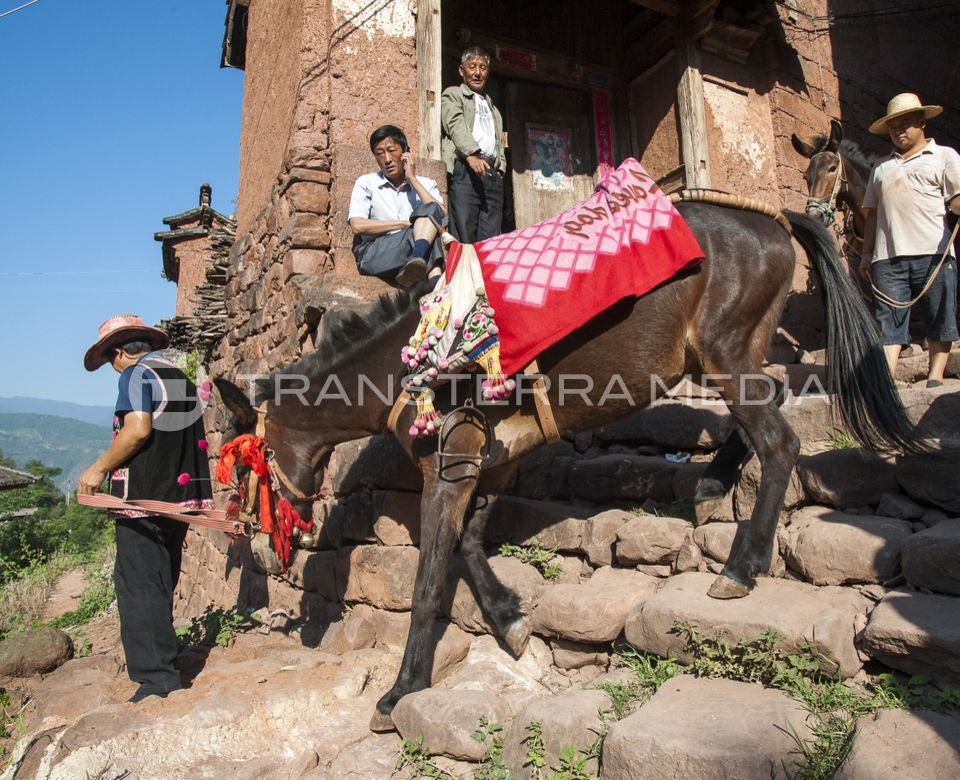
A local of Nuodeng leads a mule saddled for tourist rides down steep stone stairs. Mules are still the only way of carrying heavy loads through the village, which reaches up the steep slopes of a deep valley.
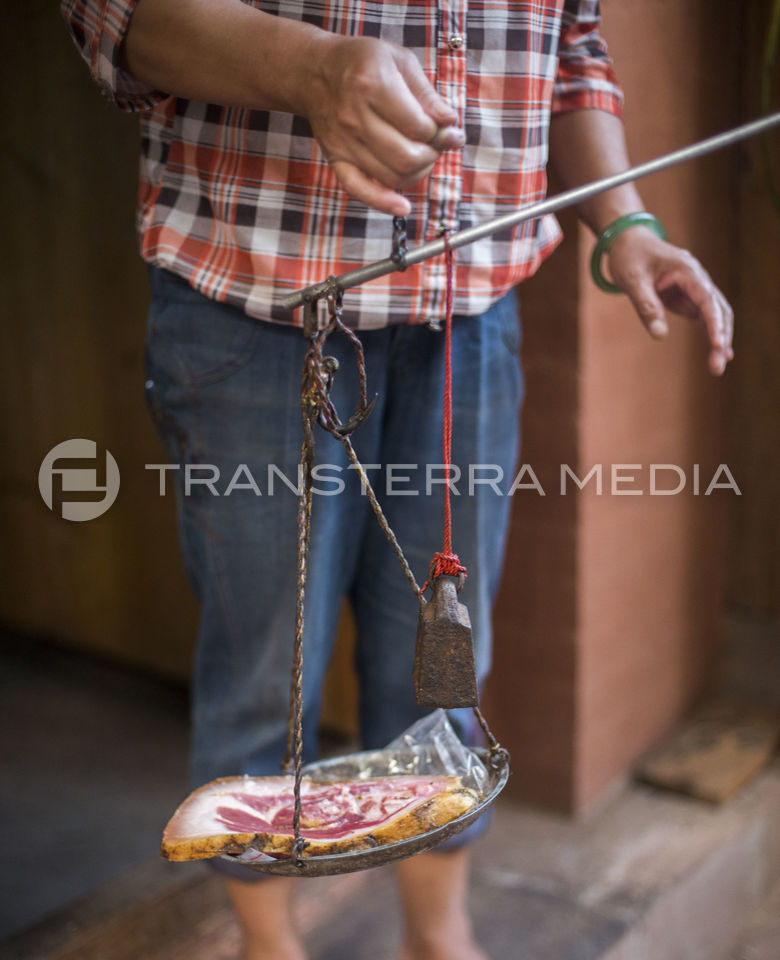
Ayi Huang weighs a slice of Nuodeng ham for sale. This cured meat was traded all the way to India on the southern silk road. Today, the ham, which sells locally for 115 CNY (Around US$19) per kilogram, is major source of income for Nuodeng along with tourism. Demand for Nuodeng ham leapt seventeen fold in a week after the village was featured in the hit television series 'Taste of China,' produced by China Central Television.
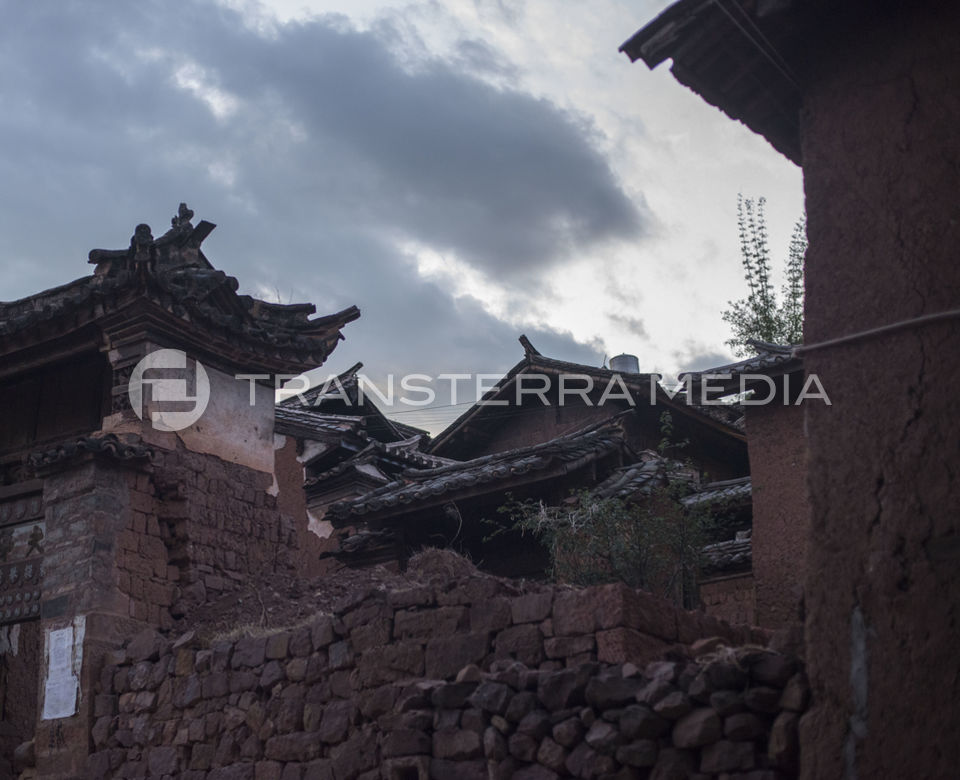
An ancient home of the Huang merchant family at dusk in Nuodeng, a thousand year old village that was known as China's wealthiest village through its trading of salt.
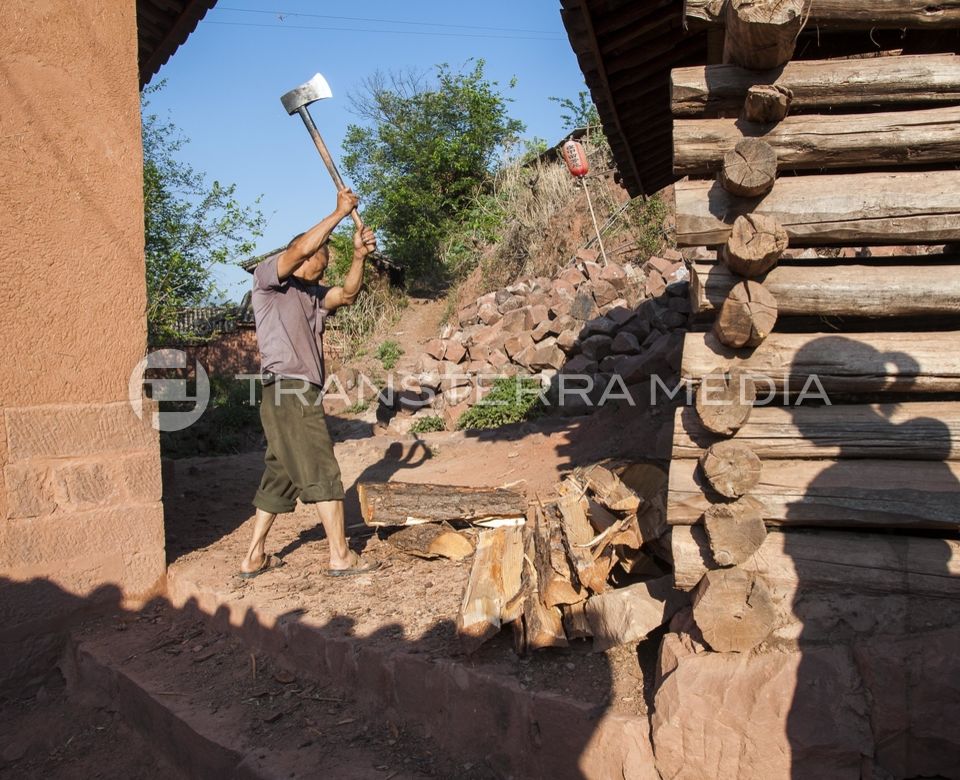
A local of Nuodeng, a thousand year old village, chops wood as his wife looks on.
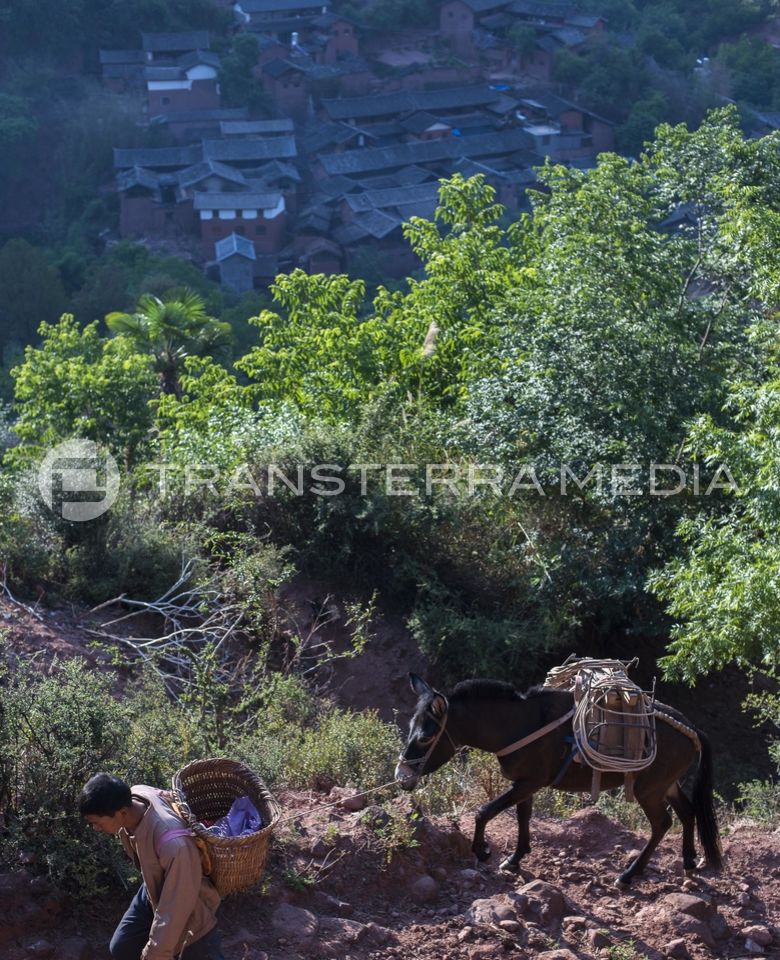
A man leads a mule over a rocky path above, the thousand year old village of Nuodeng. Mules are still the only way of carrying heavy loads through the village, which reaches up the steep slopes of a deep valley.
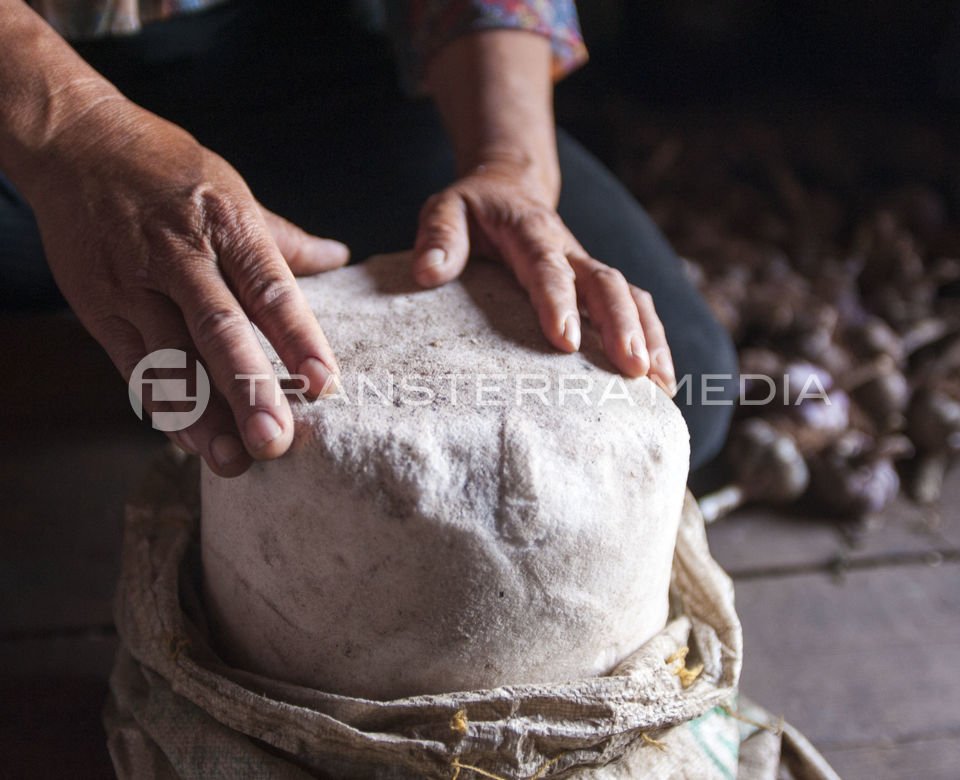
A block of locally harvested potassium-rich salt will be used for curing Nuodeng ham.
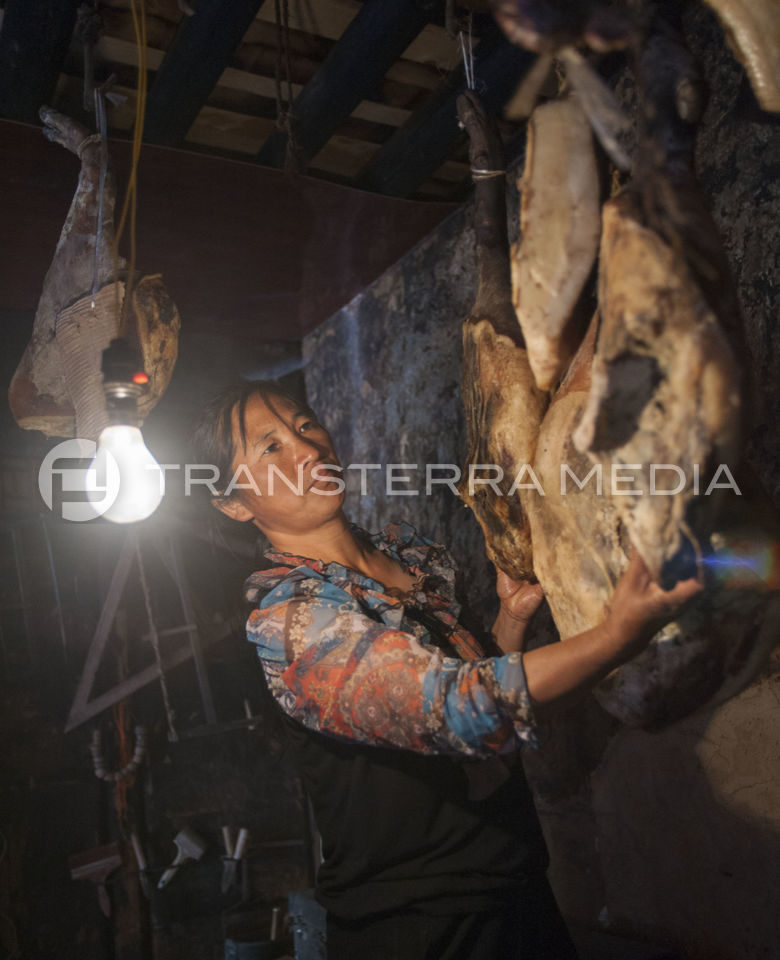
Ayi Yang examines Noudeng hams in the curing room of her home, where legs of ham are hung from rafters for a year before sale. This cured meat was traded all the way to India on the southern silk road.
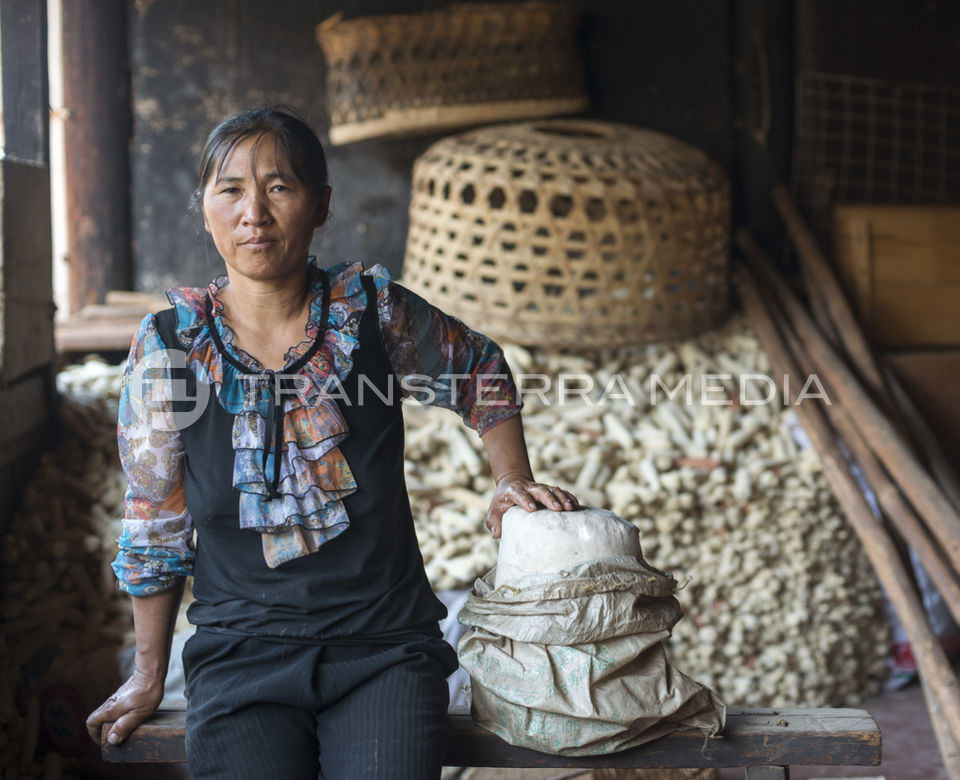
Ayi Yang poses in her home with a block of locally harvested salt used for curing Nuodeng ham.
Source from:
https://www.transterramedia.com/collections/2823
You will only receive emails that you permitted upon submission and your email address will never be shared with any third parties without your express permission.
